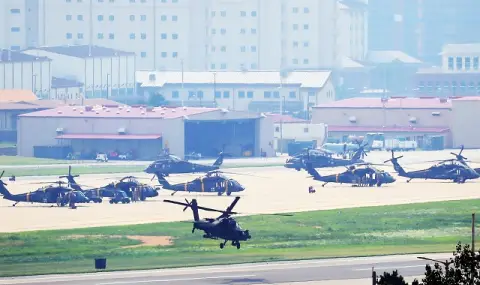Russia has developed lists of targets for potential strikes on Japan and South Korea, including nuclear power plants and other civilian infrastructure, according to secret military documents from 2013-2014 reviewed by the Financial Times.
The documents were extracted from a cache of 29 secret Russian military files, largely focused on training officers for a potential conflict on the country's eastern border from 2008-14 and still considered relevant to Russian strategy.
They describe plans to attack 160 strategic sites - from bridges and factories to command bunkers and energy facilities. The aim is to prevent the regrouping of troops in the event of a conflict.
In addition, Russian military analyses have focused on the vulnerabilities of the country's eastern flank in a possible war with NATO, citing concerns about intervention by the United States and its Asian allies.
The data underscores the role of Asia in Russian President Vladimir Putin's global strategy, which includes increased cooperation with China and North Korea. Over the past year, Moscow has recruited North Korean soldiers for the front lines in Ukraine, providing economic and military assistance to Pyongyang in return.
"Asia and Europe are inextricably linked in the global conflict," security expert William Alberk noted, adding that Western allies in Asia play a critical role in Russian strategies.
The United States has significant forces massed in South Korea and Japan. After a full-scale invasion of Ukraine in February 2022 both countries have joined a Washington-led coalition of export controls to pressure the Kremlin's military machine.
Alberk said the documents show how Russia perceives the threat from Western allies in Asia, whom the Kremlin fears would contain or allow a U.S.-led attack on its military forces in the region, including missile brigades.
"In a situation where Russia were to attack Estonia out of the blue, they would have to strike at U.S. forces and auxiliaries in Japan and Korea," he said.
The first 82 sites on Russia's target list are military in nature, such as the central and regional command headquarters of the armed forces of Japan and South Korea, radar installations, air bases and naval installations.
The rest are civilian infrastructure sites, including road and rail tunnels in Japan, such as the Kanmon Tunnel connecting the islands of Honshu and Kyushu. Energy infrastructure is also a priority: the list includes 13 power plants, such as the Tokai nuclear complex, as well as fuel refineries.
In South Korea, the main civilian targets are bridges, but the list also includes industrial sites such as the steelworks in Pohang and the chemical plants in Busan.
Much of the presentation concerns how a hypothetical strike using a non-nuclear barrage from the Kh-101 might unfold. The chosen example is Okushiritou, a Japanese radar base on a hilly coastal island. One slide discussing such an attack is illustrated with an animated gif of a large explosion.
Russia and Japan have not signed a peace treaty since World War II because of a dispute over the Kuril Islands, which the USSR occupied in 1945. This long-standing conflict further complicates relations.
Experts such as Michito Tsuruoka of Keio University have warned of a "horizontal escalation" in which a conflict in Europe could suddenly spill over into Asia, leaving Tokyo with little time to react.
The second presentation on Japan and South Korea offers a rare glimpse into Russia's habit of regularly probing its neighbors' air defenses.
The report summarizes the mission of a pair of Tu-95 heavy bombers sent to test the air defenses of Japan and South Korea on February 24, 2014. The operation coincided with Russia's annexation of Crimea and the 2014 Foal Eagle joint US-Korean military exercise.
The Russian bombers, according to the file, left the Long-Range Aviation Command base at Ukrainka in the Russian Far East for a 17-hour tour around South Korea and Japan to record responses.
It is noted that there were 18 intercepts involving 39 aircraft. The longest encounter was a 70-minute escort by a pair of Japanese F4 Phantoms, which the Russian pilots said were "unarmed". Only seven of the intercepts were by fighters carrying air-to-air missiles.
The route almost matches that taken by two Tu-142 maritime patrol aircraft earlier this year when they circled Japan during strategic exercises in the Pacific in September, including a flight over the disputed area near the Kuril Islands.
